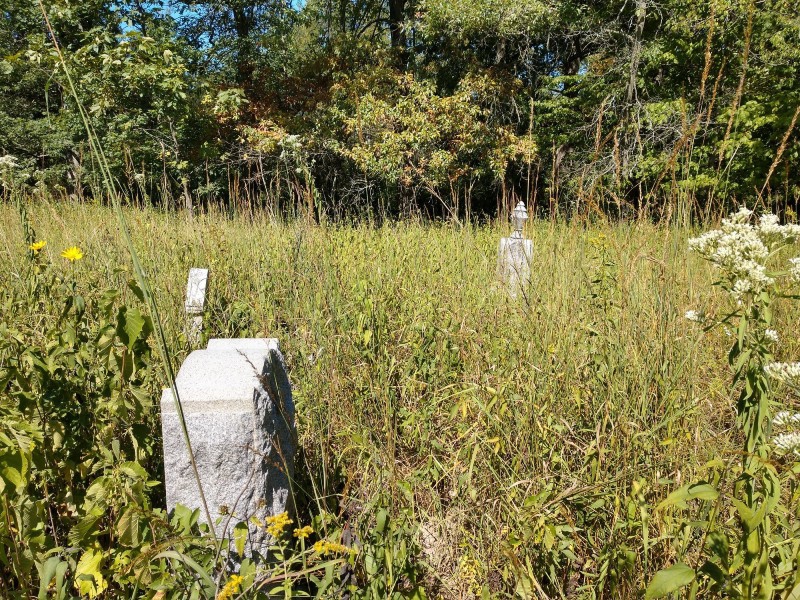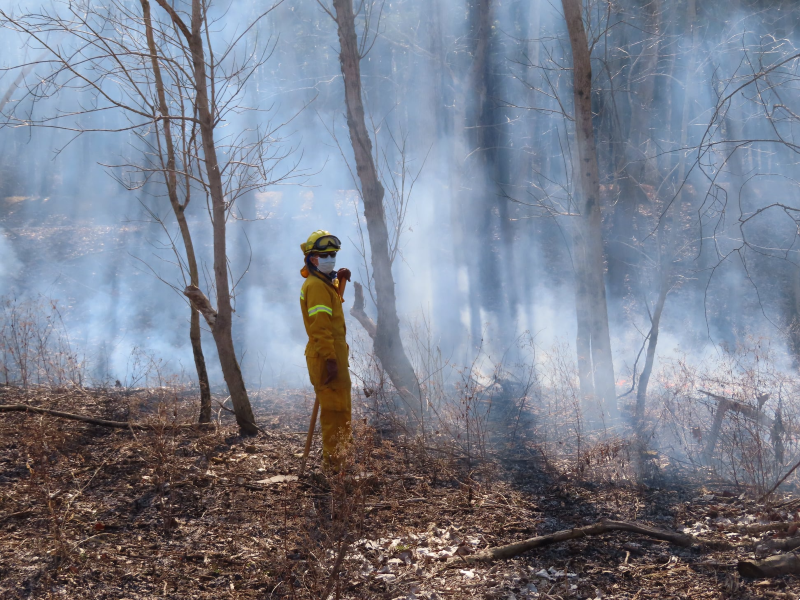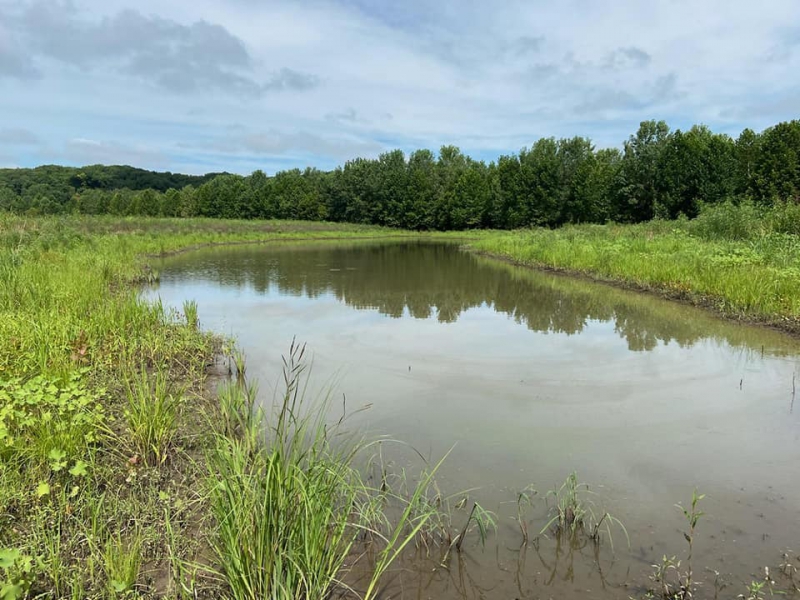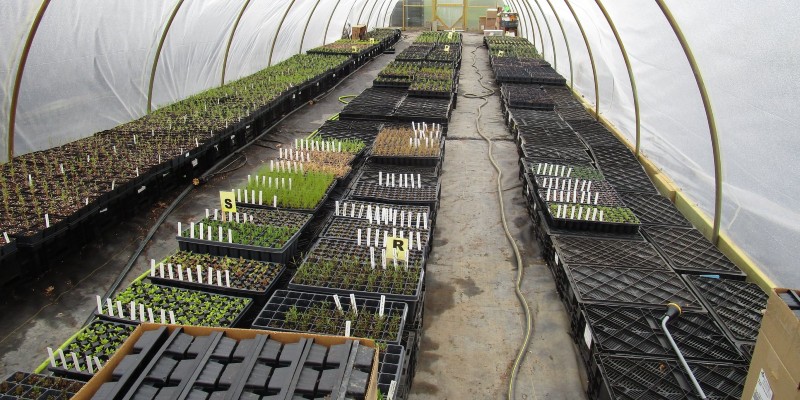On May 2nd, Grand Prairie Friends is opening the online store for their popular annual native plants sale. While the sale has been held at Lincoln Square Mall for years, the 2020 and 2021 sales shifted online due to the pandemic. I’ve known about the organization in name, mostly because of the annual sale, but until I spoke with Executive Director Sarah Livesay, I was not aware of the impact they have on the preservation of the prairie in East Central Illinois.
Grand Prairie Friends is a land trust that was formed in 1984 by a group of people who wanted to preserve a tallgrass prairie remnant near Gifford. A land trust is different from a park or forest preserve district, in that its first priorities are conservation and preservation, with human amenities taking a back seat.
The original Grand Prairie Friends formed a non-profit, and began raising money to purchase parcels of prairie remnant for preservation and restoration. This area is known as the Grand Prairie Division, because according to Livesay “we used to have about 86% of our land as tallgrass prairie.” Now, there is 1/100 of one percent in total. “It makes it one of the most critically endangered ecosystems in the world.”
Why is that an important statistic? Says Livesay, “We don’t know what we’re losing as we’re losing it. Now we’re finding out that there are medicinal purposes, some cancer drugs that we can trace back to the tallgrass prairie. We’re finding species that are so interconnected and woven together, but once you lose one, you lose two or three other species that were connected.”
Livesay offered a specific example of this from one of the prairie sites:
“We have what’s called an Eastern Prairie Fringed Orchid…when you really look deeper you find there is a specific moth that lives and will only pollinate that flower…if that’s gone then this is gone and then we lose this and we’re losing it at such a rapid rate we just don’t even know.”
This is why it’s important for an organization like Grand Prairie Friends to exist alongside the forest preserves; because prairie reconstructions cannot completely recreate a natural prairie habitat. “They’re just now finding out that it’s actually deep in the soil. There are chemical reactions and microbes working in the soil that we once they’re gone they’re gone. We can’t get them back in a restoration or reconstruction and so, it’s just not the same.”

Photo from Grand Prairie Friends Facebook page.
That first piece of land purchased by Grand Prairie Friends in 1984, Shortline Prairie, was just the beginning. The group kept finding small pieces of land in danger of being lost to add to the trust. Interestingly, the two areas where they found most of the remaining prairie were along railroad right-of-ways and in cemeteries — two locations untouched by plows. Grand Prairie Friends now own or manage 10 different tracts of land throughout East Central Illinois, some of which are cemeteries. They range from a couple acres in size to over 1000 acres. Researchers from all across the Midwest apply every year to come and study at these sites, since tallgrass prairies are rare.

Photo from Grand Prairie Friends Facebook page.
Overseeing the preservation work is Natural Areas Manager Jeff Peyton. His job is to create management plans for the sites, then much of the onsite work is done by volunteers. The plans for each site are created to “keep the integrity of the species that are there,” and involve things like prescribed burns, pulling invasive plants, and replanting native species.
In 2012 Grand Prairie Friends added woodlands to their preservation efforts with Warbler Ridge Conservation Area in Coles County. It is almost twelve hundred acres, purchased with thirteen different, little purchases all stitched together. The idea was to protect the corridor between Lake Charleston and Fox Ridge State Park.

Photo of a wetland area at Warbler Ridge from Grand Prairie Friends Facebook page.
According to Livesay, “we slowly started off purchasing those properties as they became available on the market, and sometimes that meant neighbors would come to us and say, ‘would you like to buy our land?’ It’s a long process. As a non-profit, we don’t just have that money, so every time a sale would be offered, we would have to raise the funds and write grants. That’s how all of our funding comes through.” Nine years later, they’ve claimed almost the entire corridor, which includes 10 miles of trails for visitors to explore.
All of the preserves are open to the public from dawn until dusk, but it’s important to remember their “conservation first” mission, meaning you aren’t going to find all the amenities you would encounter at a park or forest preserve. There are some benches, and porta-potties, but that’s about it. The Board of Directors hopes that by keeping access to the preserves open, they will bring new prairie stewards into the fold.
The native plant sale is another way they educate the public about their mission. For more than 20 years, they’ve offered the opportunity for people to purchase native plants, encouraging them to create native gardens rather than yards landscaped with invasive plants. Livesay explains:
“The native plants are what were here pre-settlement, and when you’re planting an invasive exotic plant, that is going to just naturally want to attack our native plants. They seed faster, they may grow faster, so they are going to take up the sun, take up the water resources. Some of them even send chemicals out of their root systems that kill our other plants. The other reason is our native plants are much easier to work with. They are designed to be here. They’re used to this rougher landscape. They’re used to the climate here. They have natural resistance to some of the disease.”
Planting native species in your yard will also provide for animals and insects that live here. They are an important food source and place for nesting.
The plant sale goes live on May 2nd at 8 a.m., and goes through May 14th. The online catalog is available now, so you can make a plan. The catalog not only lists the available plants, but it also gives you valuable information about each plant and what sort of environment it thrives in. There is a minimum purchase requirement of $48. You can spend this yourself, or coordinate with friends, then pick up happens later in May. You can find all of the purchasing and pick up details on the Facebook event page, and browse the online catalog here.
If you are interested in getting involved with the work of Grand Prairie Friends, you can find volunteer opportunities here.








